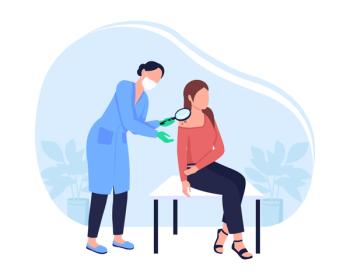
NJ's Largest Insurer Seeks Solutions for Opioid Crisis
Horizon Blue Cross Blue Shield's annual Patient-Centered Summit covered efforts by the state to expand naloxone access, provide peer support for those rescued from an opioid overdose, and the insurer's prevention practices.
On the same day Governor Chris Christie expanded efforts to help those fighting opioid addiction, New Jersey’s largest health insurer used its 4th Annual Patient-Centered Summit to educate providers and health experts on ways to connect those who need care with services.
On Tuesday, Horizon Blue Cross Blue Shield of New Jersey, which covers 3.8 million members, brought several hundred healthcare professionals to New Brunswick to hear from the top state official in charge of mental health and Medicaid, along with Horizon’s chief of Clinical Operations and Transformation, who is leading efforts to spot patients at risk of opioid dependence. Last year, an
The evening’s main messenger, however, was Tracey Helton Mitchell, MPA, CATC, a recovering heroin addict who today works with others trying to overcome addiction. Mitchell’s path started when she was teenager with a prescription to Vicodin, after she had her wisdom teeth removed. A decade later, she decided to stop from a jail cell in San Francisco, where she had fled from Cincinnati in search of a needle exchange program.
Like so many others, Mitchell said, she knew almost nothing about drugs when she first tried them. “When I was first going through opioid withdrawal, I was so naïve I didn’t know what that was,” she said. “I had dependency, as opposed to addiction, before I knew what was happening.”
Opiates’ dangers stem from both ignorance and stigma, Mitchell said. “People can understand alcohol, but they’ll say, ‘What did you do to get a heroin addict in the family?’”
Most do not understand how opioids affect the body, or how dangerous it is to mix pills with alcohol. Opioids mask both physical and emotional pain, she said, and their increased use suggests the need for more mental health programs to treat depression.
Even when people know they need help, the practical barriers can be as challenging as the financial ones, she said. When residential treatment is suggested, many say, “Who is going to take care of my children?”
And patients need treatment choices beyond the 12 steps, she said. Options include
Most of all, Mitchell said, federal programs need to hear from patients who are dealing with addiction today. “I have 18-and-a-half years of recovery—I don’t know what it’s like to be using now,” she said.
Emergency Order on Fentanyl “Knockoffs”
Experts say the recent rise of fentanyl and its analogs, or “knockoffs,” has made heroin addiction more deadly, and that New Jersey is among the states that has seen a spike in use. Earlier in the day,
At the Horizon Summit, NJ’s Acting Human Services Commissioner Elizabeth Connolly, MPA, discussed other steps the state is taking to bring services to those fighting addiction:
- A “recovery coach” program will expand from 5 to 11 counties; this program connects peers in recovery to patients in the emergency department who had opioid overdoses reversed with naloxone, to encourage them to seek treatment.
- Medicaid expansion, which has extended coverage to 500,000 people, has allowed 45,000 people to be treated for addiction who would otherwise have lacked access.
- The current state budget added $127 million for behavioral health services, mostly to increase reimbursement rates.
- The state purchases naloxone (Narcan) at a discount for law enforcement and EMS agencies, which have already used it more than 6000 times in 2016.
Horizon’s Role in Prevention
As a health plan, Horizon is using claims data and new delivery models to stop opioid abuse on the front end, said Mary Ann Christopher, Horizon BCBSNJ chief of Clinical Operations and Transformation. Horizon has previously announced success with
Plus, pharmacists have an important role in prevention.
“Every day, pharmacists sift through the claims data to understand which members might be on the road to opioid abuse and addiction,” Christopher said. Health plan pharmacists are mindful to keep an eye out for patterns, such as an inappropriate dosage for a patient’s age or comorbidity, that might be a red flag.
At the same time, she said, the health plan is working to increase access to MAT. Physicians must have
All 3 speakers addressed the need to challenge stigma, both in the language of addiction recovery and in the assumptions about what it takes to overcome substance abuse. The key to remember, Mitchell said, is that addiction is a chronic condition, and “we may not get it the second or even the third time.” But with support, recovery is possible.
“I stand up here today,” she said, “because other people don’t have a voice.”
Newsletter
Stay ahead of policy, cost, and value—subscribe to AJMC for expert insights at the intersection of clinical care and health economics.





























































